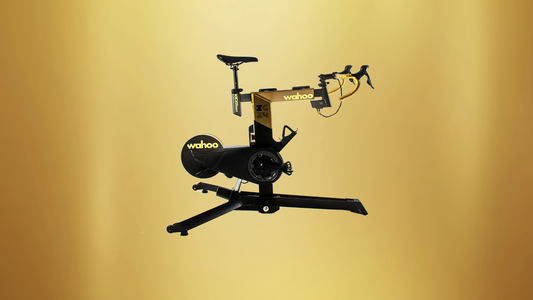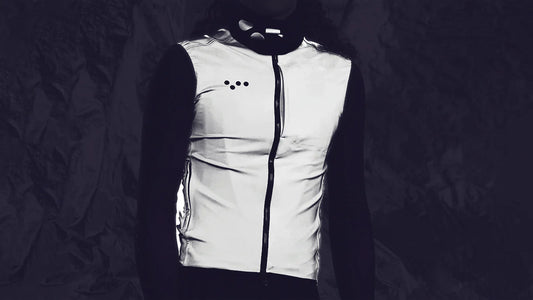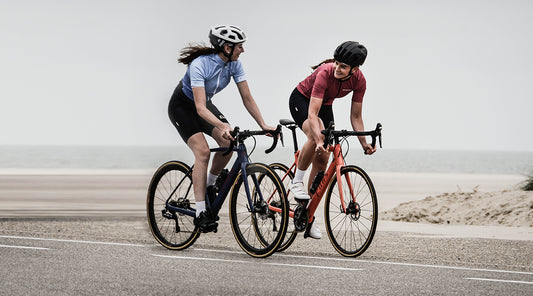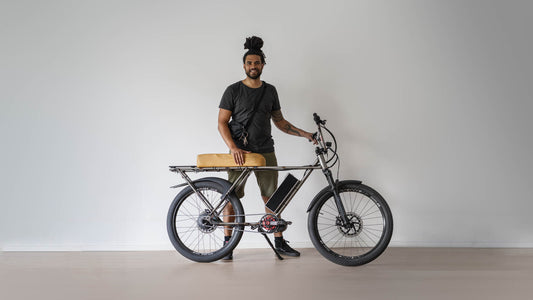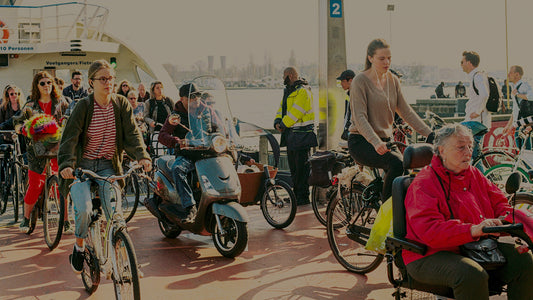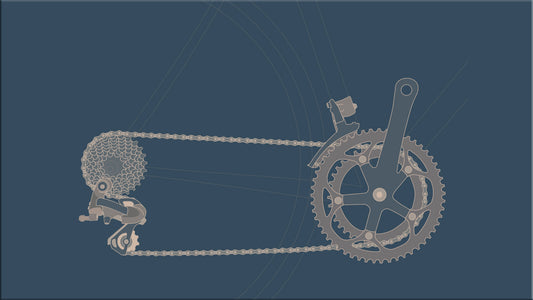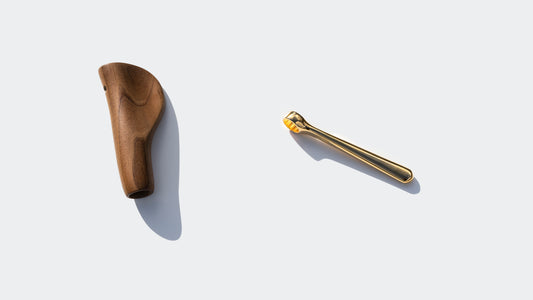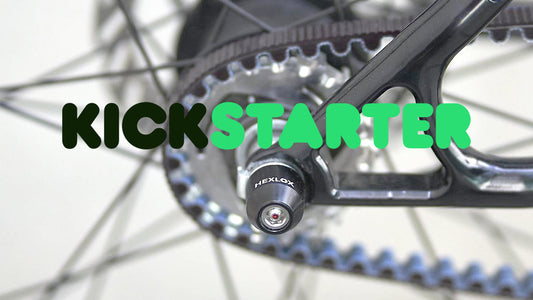7 tips to protect your bike from theft

7 TIPS TO PROTECT YOUR BIKE AGAINST THEFT - UPDATED FOR 2022
We have updated this very popular post with a few bonus tips that reflect the changes in technology and riding culture in 2022
Every year hundreds of thousands of bikes are stolen in Germany alone. Only in Berlin over 30,000 bikes are going missing, the targets being both new and old bikes. Sadly most of them never come back and a large quantity is being stripped and sold part by part.
In London, things aren't much better. The Evening Standard recently reported that one bicycle is stolen in Britain every six minutes. The highest rate of bicycle thefts took place in London, statistics from Direct Line Insurance revealed. A total of 21,745 bikes were reported stolen in London last year, accounting for nearly a quarter of all UK bike thefts. Over 58,000 bikes have been stolen in the capital in the last three years.
The solution for many is to take the bike with them into the security of their apartment or house. For most of us, this is option is not practical. Even if bikes, in general, have become lighter it's still hard to lug 8-15 kg. worth of bike, up 2, 3 maybe even 4 flights of stairs - twice a day! This is especially true for eBikes, where the weight is significantly higher than your average bike. Most eBikes never get hauled up the stairs but remain, exposed on ground zero.
So what can you do to secure your beloved bike against theft? After all, it probably has a comfortable saddle, perhaps you just bought new lights for it and maybe like a lot of us, you've also chosen a special design.
There are no 100% safe locks. All lock manufacturers design their products to combat opportunity theft. But today there are new ways to make sure that it is at least very difficult for thieves to steal your bike.
 A battery powered, cordless angle grinder of this type can easily cut through any lock in seconds. These angle grinders can be bought online for around €100,-.
A battery powered, cordless angle grinder of this type can easily cut through any lock in seconds. These angle grinders can be bought online for around €100,-.
The vast majority of bike thefts are opportunity-driven. A thief passes by your bike and sees that it is poorly secured and jumps on the opportunity to quickly take your bike - or bike parts. The solution is to make it as difficult as possible for the thief, so your bike is no longer seen as easy money.
Remember, bike thieves, want to spend as little time and effort as possible with the maximum outcome. They are simply going for the low-hanging fruit. Again, make it as difficult and time-consuming as possible for the thief to break your locks and take your bike. Important to keep in mind is also that the bike next to yours probably has no protection at all. Every little thing helps to protect what you love.
1. Choose a bright, well-frequented place to park your bike
If you have to park your bike in the open street here are some tips on reducing the risks. The more foot traffic and well-lit they are, the harder it is for a thief to operate undetected by passersby's. However, thieves are known to have cut through locks with portable angle grinders, in broad daylight on busy streets. Below a pretty incredible video that shows the brazenness of some bike thieves.
A bike thief brazenly cuts through a bike lock with a portable angle grinder in broad daylight and in full view of other people on a busy street in San Francisco.
A designated bike parking garage or box is safer since most of them are surveyed by video. If you cannot carry your bike up the stairs to your apartment, the next best option is to park it behind a locked door - in an inner courtyard, for example. Avoid leaving your bike out in the street where it is increasingly exposed to potential theft. If you have to leave your bike in the street, then choose a spot with the most foot traffic.
 The size and heft of your D-lock should reflect the threat level of where you bike and your biking style. For an urban commuter who has to leave their bike in a bike rack at the office, or train station a heavier lock is needed.
The size and heft of your D-lock should reflect the threat level of where you bike and your biking style. For an urban commuter who has to leave their bike in a bike rack at the office, or train station a heavier lock is needed.
2. Invest in a sturdy and solid D-lock
Your first line of defense against bike theft should be a solid D-lock. When you lock the bike frame with your D-lock, make sure you lock it to something anchored to the floor. A lamppost, street sign, or sturdy fence is perfect. Just make sure you don't obstruct the traffic or block access for pedestrians. Choose a lock size that fits tightly around the lamppost and the frame, minimizing any space a thief can use to gain leverage with a crowbar to simply break open the lock with brute force. Below is a video that shows how easily a thief can break apart a flimsier lock.
See how easily a thief can break a lock using leverage and brute force.
Depending on the threat level in your area and the type of biking you do, choose the right level of lock sturdiness. The higher the threat level is - ie school campuses, bigger cities - you will have to use a bigger and heavier lock. In a small town or rural area, you can probably get away with a lighter and more portable lock.
...this is why you should never, ever rely on a cable lock.
 A security tie of this type is only designed for the quickest of quick stops. This means a maximum of 2-3 minutes in the coffee shop.
A security tie of this type is only designed for the quickest of quick stops. This means a maximum of 2-3 minutes in the coffee shop.
3. Gone in 30 seconds - Never, ever leave your bike unlocked!
Opportunity theft makes up almost half of all bike theft. Make sure when you enter a shop, you lock up properly. Modern bikes are light and can be carried away with ease. In addition to a D-Lock, portable security ties are a great option for a quick coffee stop or very quickly running on the edge. Here at Hexlox, we ride around with Hiplok's Z Lok Security Ties. They are small and lightweight enough to always be carried in your saddle bag or pocket. Inside the toughened nylon outer is a stainless steel band offering flexible, adjustable protection for whenever you need it. However, please remember that these ties are not meant to replace a sturdy and solid D-Lock, they are just temporary solutions for a very quick in-and-out errand.

4. The 20% Rule
Expensive locks are not always better, we recommend you to use the 20% rule. That means that your overall protection should cost around 20% of the value of the bike. However, if your bike is a 100€ bike, then a 20€ lock will not do. A stable D-Lock or a chain with square section linkages and a proper padlock is the minimum.
 The Hexlox anti-theft system can protect virtually any bike part on your bike. Wheels, saddle & seat post, stem, pedal, lights and more...
The Hexlox anti-theft system can protect virtually any bike part on your bike. Wheels, saddle & seat post, stem, pedal, lights and more...
5. How to protect your wheels, saddle and seatpost against theft
Bike part theft is an additional problem. Someone passes by and sees your nice, expensive leather Brooks saddle and simply loosens the hex bolt and steals it. Or, a thief simply loosens the quick release skewer on your front wheel and makes off with it. Here at Hexlox, we're of course partially in this particular question since we manufacture, what we believe is the world's smartest and best looking anti-theft system for bike parts.
To protect your wheels, no matter what type of wheel you have - quick release, thru axle, or wheel nuts - Hexlox has a smart solution. For saddle and seat-post protection, we offer riders a full range of easy solutions.
...the problem is that anyone with a regular Allen Key/Hex Wrench can easily loosen the hex bolts on your bike and steal your bike parts!
Anything that will be an obstruction for the thief will make him move to the next bike, which is probably less safe than yours. Even if the thief manages to throw your bike into a truck and later work on it, having secured all your parts will make it a real hassle for him. Even for thieves, time is money, and the safer you can make it, the more likely the thief will move onto the next bike. A very important point is also that if your saddle and wheels are individually secured, then if the thief resells the bike, it's clear it was stolen.
 Even in the assumed security of your garage you need to lock your bike.
Even in the assumed security of your garage you need to lock your bike.
6. Bike Security At Home
Great, you have a garage, or a basement, where your bike is off the wild, open street. That's a good start. However, just leaving your bike unlocked here will not do. You have to lock it to something else. Perhaps you have other bikes, or a shelf, etc. Make it difficult for the thief to just carry it out and then break your lock somewhere else. Even the strongest thief will not be happy carrying two bikes up the stairs. If you want to hang your bike on the wall to save some space, Hiplok's Air Lok provides a great, stylish way to securely store your bike in the garage - or elsewhere.
7. Take Part in a Bike Registration Program
Every little roadblock you can put in the way of the thief increases the chance that he/she will move on to the next bike. Make it clear that your bike is registered at any bike registry program . This will make it harder for the thief to re-sell your bike. If you are using anti-theft protection for your saddle and wheels etc, make sure the thief also sees this. The harder it will be for him to strip the bike later, the less likely he will take it.
The primary national bike registry in the UK is Bike Register , a police-approved scheme that every police force can access in the UK. Bike Register makes it easy to alert the police of the theft, and it will also send out a tweet publicizing the robbery. On the Bike Register website, there are various kits for sale to support you in permanently marking your bike.
Also, consider registering your bike on Bike Index, which is a global bike registration and recovery service. It's got a proven track record of reuniting bike owners with their rides. Bike Index is a non-profit online bike registry where anyone can register their bicycle for free. Unlike most other registers, the Bike Index database is openly available with an accessible API so that anyone can use it to find and return stolen bicycles. The registry being open to anyone can help track and recover bicycles in different cities or even countries, which would otherwise be difficult with multiple registries with closed access.
BONUS TIPS - UPDATED FOR 2022
 A Geo Bike Tracker is connected to a mobile phone app...
A Geo Bike Tracker is connected to a mobile phone app...
8. Invest in a Geo Tracker
If you want to take the security of your bike even further, geo-tracking devices could be something for you. Geo tracking devices and their supporting apps are designed to help reduce bike theft by alerting the owner if the bike moves. The small and light tracker is attached to the bike. With the app, the owner is able to trace the bike - even using it to alert the police to where the bike is being kept.
These types of trackers have in the past been on the slightly expensive side - at around €100-150,- but nowadays we see more and more bikes sporting the Apple Air Tag which starts at around €25,- or Samsung's SmartThings Tracker (subscription - first year free, after that €50,- /year.)
For the ultimate in accuracy, we recommend the Spytec GPS. Fast updating and super accuracy make this the best bike GPS tracker for quick recovery. However, this comes at a price - Annual subscription starts at $19.95/month.
9. Consider a dedicated bike insurance policy
OK, strictly speaking, this is not a tip to protect your bike against theft, but rather to minimize the negative consequences in the case it actually gets stolen. If you have a relatively expensive bike maybe you should consider this? Most people believe their home insurance will cover their bikes in case of theft but they could be up for a rude awakening. After all, you already have home insurance and it's relatively inexpensive compared to dedicated insurance for a bike. Inform yourself by asking your insurance company the right questions.
10. Combine a GPS tracker and Insurance Policy - BikeFinder
The Norwegian based BikeFinder claims that they offer the world's first bike GPS tracker with an included dedicated insurance policy. Since the first BikeFinder units were introduced, 75% of reported stolen bicycles have been recovered. (Currently, It seems that the insurance policy is only available for Scandinavian customers.)
With the unique fastening mechanism, the unit is virtually impossible to remove without special tools. It is hidden, flexible and fits all types of bikes. The subscription includes tracking of your bike directly in the mobile and a market-leading insurance. With the BikeFinder app, you can report theft, see the battery level and receive push notifications if someone moves on your bike. In cases where the bike is damaged during a theft, the insurance will cover necessary repairs
